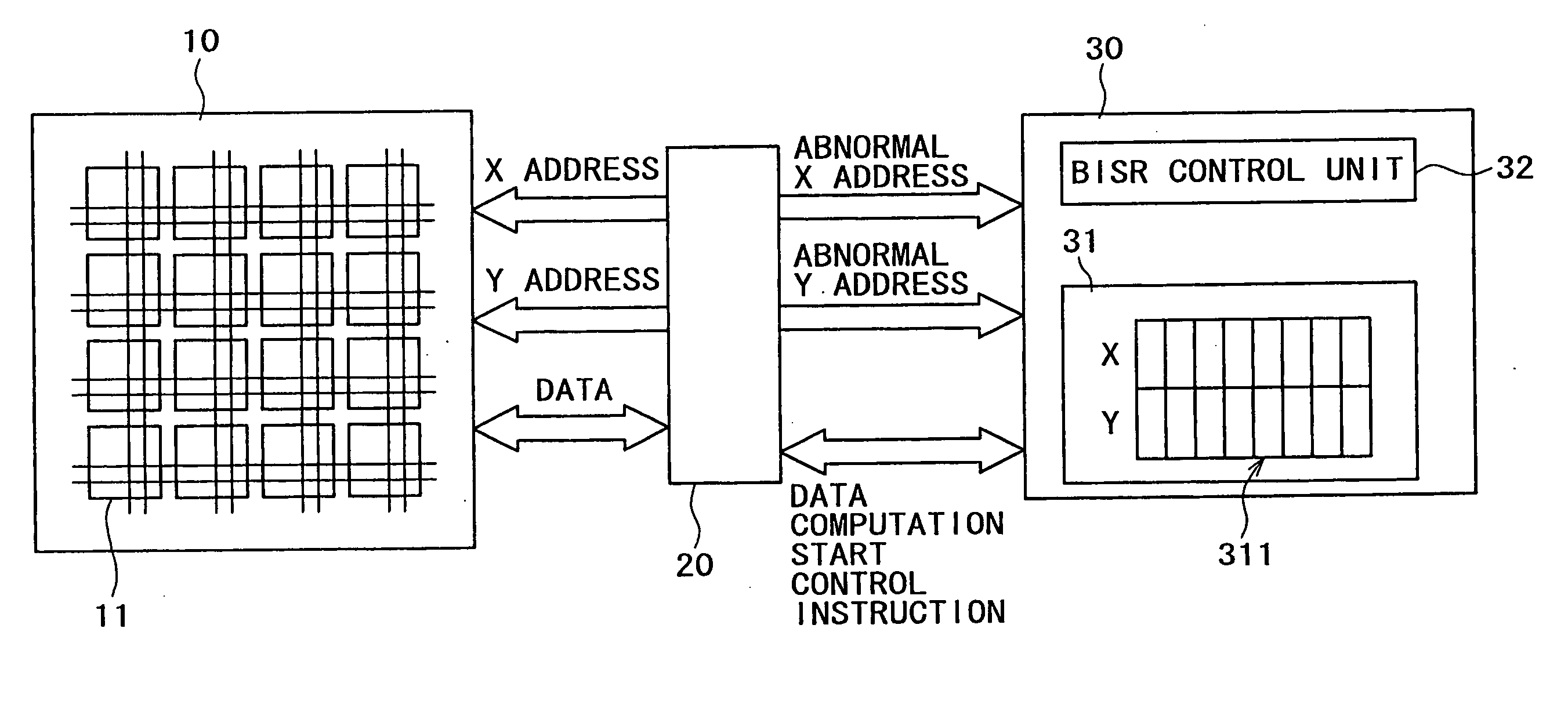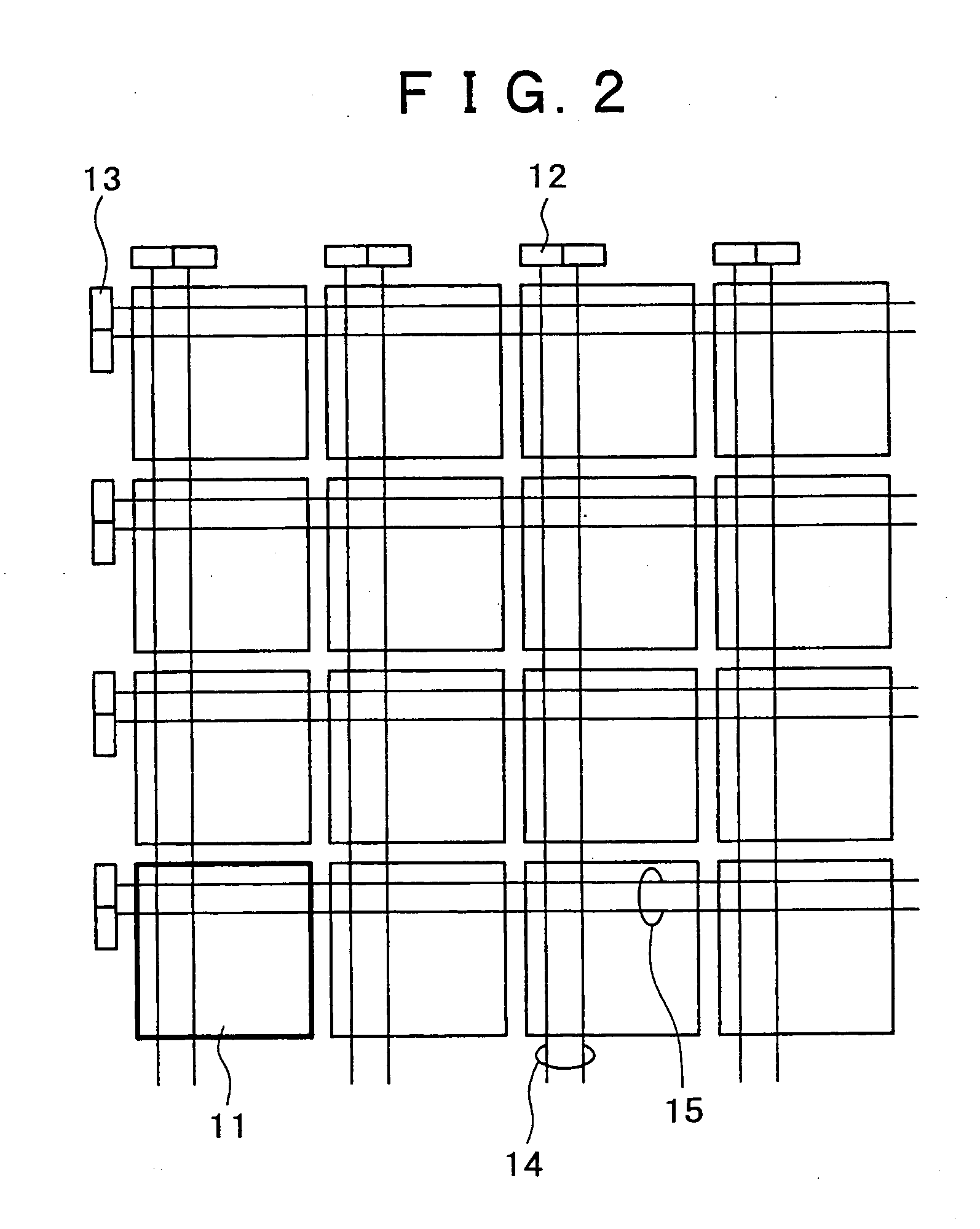Semiconductor memory apparatus and self-repair method
a memory apparatus and semiconductor technology, applied in the direction of digital storage, electronic circuit testing, instruments, etc., can solve the problems of almost impossible to increase the yield to 100%, the apparatus cannot of course be shipped as a product, and the yield becomes a problem
- Summary
- Abstract
- Description
- Claims
- Application Information
AI Technical Summary
Benefits of technology
Problems solved by technology
Method used
Image
Examples
first embodiment
[0072]FIG. 6 is a block diagram showing a typical configuration of a BISR circuit 30A provided by a first embodiment. As shown in FIG. 6, the BISR circuit 30A implemented by the first embodiment includes buffer units 41-1 to 41-4 each including address-pair storage locations and flags, an X-mask-address storage unit 42 and Y-address confirmation units 43-1 to 43-4. An overflow bit is a BISR result indicating whether or not the address of an abnormal bit is repairable.
[0073] When the BIST circuit 20 finishes an evaluation process to determine whether each memory cell is normal or abnormal, the BIST circuit 20 supplies a BISRSTART start signal to start a BISR computation to the BISR circuit 30A. Receiving the BISRSTART start signal, the BISR circuit 30A starts the BISR computation. As the BISR computation is finished, the BISR circuit 30A outputs a BISREND end signal indicating that the BISR computation has been finished.
[0074] In the configuration shown in FIG. 6, each of the buffe...
second embodiment
[0092]FIG. 7 is a block diagram showing a typical configuration of a BISR circuit 30B implemented by a second embodiment. Components employed in the second embodiment as components identical with their counterparts included in the first embodiment shown in FIG. 6 are denoted by the same reference numerals as the counterparts. As is obvious from FIG. 7, the BISR circuit 30B includes buffer units 41-1 to 41-4 and Y-address confirmation units 43-1 to 43-4. Each of the buffer units 41-1 to 41-4 has address-pair storage locations each used for storing a pair of addresses and has flags associated with the address-pair storage locations. In each of the buffer units 41-1 to 41-4, flags associated with a particular address-pair storage location are linked to flags associated with address-pair storage locations adjacent to the particular address-pair storage location in a chain connection to form shift registers. As many such shift registers as row redundant lines 14 connected in the in the Y...
third embodiment
[0104] In the case of the first and second embodiments, as the Y-address storage unit 431 employed in each of the Y-address confirmation units 43-1 to 43-4 as a unit for confirming Y addresses, 2 Y-address storage locations are provided. In the case of a third embodiment, Y shift registers 413 are employed as shown in FIG. 8 in place of the Y-address storage unit 431. The Y shift registers 413 are used for implementing a method to confirm Y addresses in accordance with the third embodiment.
[0105] To put it concretely, as many Y shift registers 413 as column redundant lines 15 connected in the X directions are employed. In the case of the third embodiment, the number of Y shift registers 413 is 2. Pointers of the Y shift registers 413 are each shifted at one time. If a Y address stored at a Y-address storage location pointed to by a combination of pointer positions is the same as the Y address stored at an address pair in the buffer units 41-1 to 41-4, the address pair is masked. A ...
PUM
 Login to View More
Login to View More Abstract
Description
Claims
Application Information
 Login to View More
Login to View More - R&D
- Intellectual Property
- Life Sciences
- Materials
- Tech Scout
- Unparalleled Data Quality
- Higher Quality Content
- 60% Fewer Hallucinations
Browse by: Latest US Patents, China's latest patents, Technical Efficacy Thesaurus, Application Domain, Technology Topic, Popular Technical Reports.
© 2025 PatSnap. All rights reserved.Legal|Privacy policy|Modern Slavery Act Transparency Statement|Sitemap|About US| Contact US: help@patsnap.com



